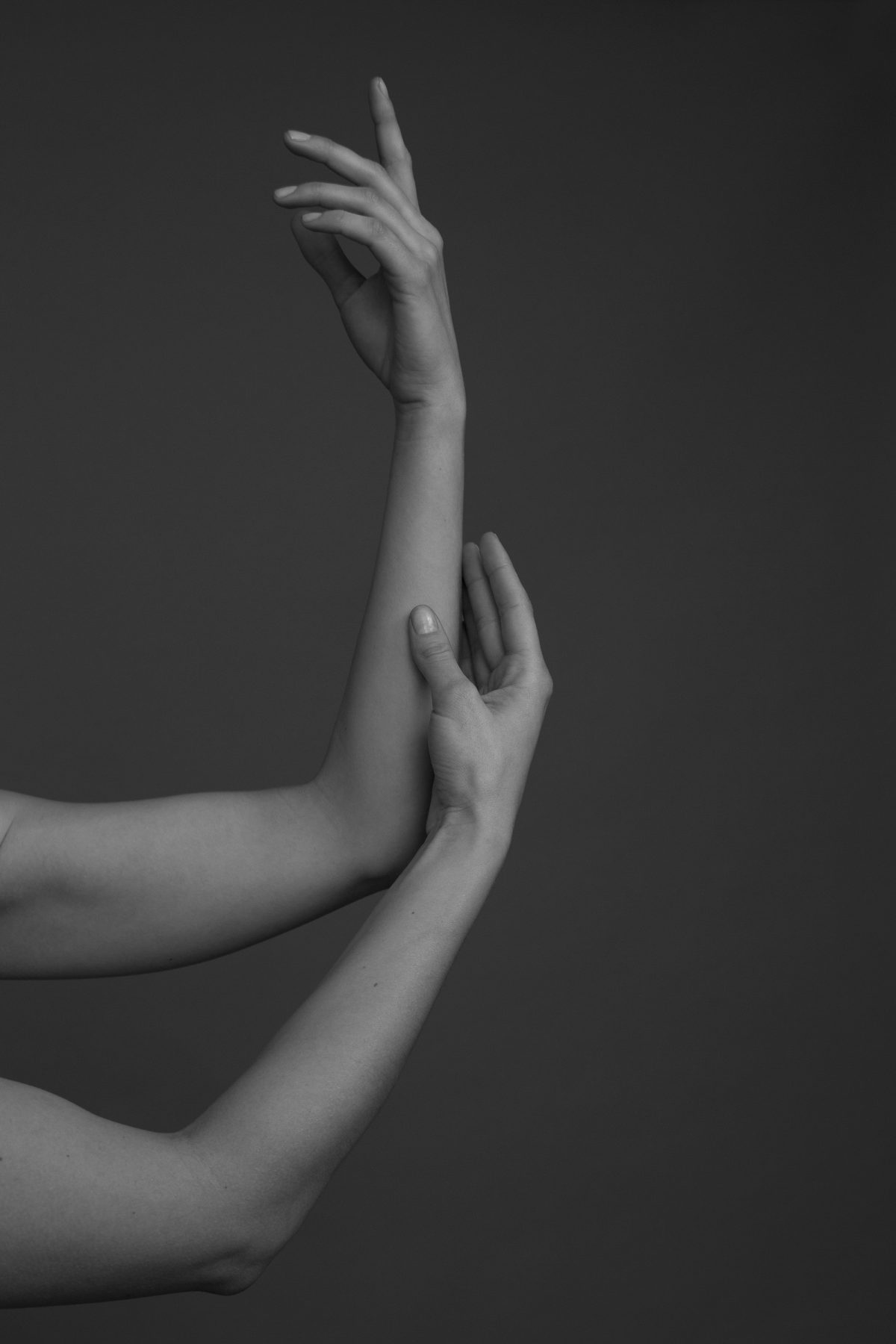
FEATURE
What plants can teach us about prêt-à-porter, and why it matters.
By Kathryn
Carter
‘So last season’—three words used to pronounce the death of a trend. To call time on a particular something that was once the thing that everybody who was anybody wanted—the thing that was ‘on trend’. Because not having it meant that you were ‘off trend’, subsequently exiled to the shadows of the runway, forced to fend for yourself in a listless limbo between last season and the next, tangled in cutoffs of lace, leather and fur; passé, outdated and alone.
For as long as anybody can remember, the concepts of ‘old’ versus ‘new’ have been the fashion industry’s core organising paradigms of fashion trends. Before a new silhouette was born an old hemline had to die, or so the story went. At the mercy of linear temporality, innovators governed the trends of tomorrow in a radical state of ceaseless revolution. But times have changed. And in a world where the creation and consumption of fashion has been so innately altered by globalisation—along with the beast of social media—these paradigms have become obsolete.
In the words of Pierre-François Le Louët, president of trend forecasting agency NellyRodi, ‘the word “trend” is a little bit like the word “luxury”—nobody really knows what it is anymore, where it starts, where it ends.’
Le Louët’s statement resonates strongly with the growing chorus of those who have been hazarding the demise of trends (as we once knew them) since the nineties. So dire has the situation become, even influential forecaster Li Edelkoort has chimed in, announcing the ultimate death of fashion itself. If that sounds dramatic, it’s because it probably is. Even so, when an industry once governed by the seasons can no longer predict the weather, you have to ask: how will we know what’s next? And if we lose our foresight, what will become of fashion and the way we talk about it?
The answer may be found in rhizomes—horizontal, underground plant stems that strike new roots down into the soil, while simultaneously shooting new roots to the surface. Sound insane? Maybe it is. But tricky as it is to draw a line between plants and prêt-à-porter, allow me to explain.
Pierre-François Le Louët
"The word 'trend' is a little bit like the word 'luxury'—nobody really knows what it is anymore, where it starts, where it ends."

According to Denmark-based scholar Maria Mackinney-Valentin, we can learn a lot about the changing nature of trends from the rhizome. The root’s complex, underground structure is the trend mechanism, a sprawling botanical web that works to produce the aesthetic superterranean manifestation—the trend itself. Here, the trend is the rose that blooms within the pages of a high-end glossy for a single season, before withering away composted and obsolete, a fleeting apparition.
Once blossoming from a hierarchical system organised according to dichotomy—old versus new—and points of origin—London, Paris, New York—today’s roses stem from a more organic place. Like the rhizome, trends now cultivate themselves, eternally in construction or collapse, a process of perpetual evolution. Unlike the old temporal organisation, the rhizome offers a more spatial conception characterised by being relational, formative, and horizontal rather than oppositional and finite.
London-based trend analyst Geraldine Wharry sees truth in this rhizomatic madness. A strong methodology underpins traditional trend forecasting, she says, involving huge amounts of research. But that’s not all there is.
‘There’s also an aspect that’s just sort of intuitive, and unpredictable,’ Wharry tells me, adding that some trends really do bloom from rhizome-like structures, becoming defunct, and then returning unawares. ‘Maybe they’ve been simmering and growing pathways underground for a while…[but] things come back,’ Wharry explains, almost as though the roots of the trend had stopped growing before beginning to sprout once again—when other roots came to lovingly revive it. ‘I think [the rhizome theory] is really relevant…you can see it already.’
This notion of revival as opposed to originality is akin to the suggestion that trends (in the rhizomatic sense) gradually mutate, rather than changing radically. When asked to ponder the trends of recent years, Wharry says that they’re shifting slower, adding that there’s much repetition. ‘Trends are not as clearly separate,’ Wharry says. ‘There are a lot of synergies between them. It’s harder to say well this is this and this is that, they’re all kind of, a bit together.”
Unsurprisingly, this increasing synergy is changing the way that forecasters answer the industry’s all-time favourite questions: what’s new, what’s hot and, most importantly, what’s next?
‘It’s affected my methodology already,’ Wharry tells me, revealing that her entire business model has shifted in light of the industry’s current state of flux. ‘I’ve decided to just write big reports for clients…and publish mini reports and articles and focus on that [instead].’
This new method allows Wharry freedom to discuss the things that, in her eyes, matter most. To old-school forecasters—savvy individuals paid for facts, not feelings—Wharry is an industry eccentric, but she doesn’t stand alone. ‘It’s a little bit unconventional,’ she says of her approach, but that doesn’t faze her. Wharry is someone with a vision, not just someone who predicted the domineering popularity of slogan sweatshirts in 2013. Like Li Edelkoort, Wharry is one of a growing number of neo-forecasters. A new sub-breed of analysts who want to work with trends, just not necessarily within the current globalised, fast-paced, industrialised system.
"The zeitgeist will continue to obsess upon what is ‘new’, conjecturing in vain on what’s to come. Items in varying shades of quasi-originality will continue to be celebrated as things that are ‘on trend’, consequently classifying those without them as ‘off trend’ by absolute default. But there is a glimmer of hope for those attuned to the long-term inconsequentiality of it all."
Much like the aforementioned chorus of critical thinkers girding their loins for the looming death of fashion, neo-forecasters see the invalidity in dated forecasting models. Disheartened by the over-saturated state of the zeitgeist, Wharry says that she feels like too much is going on. ‘I don’t really want to be a part of that,’ she admits. ‘I just want to be able say, okay so I see that there’s a lot going on, but I’m going to pick this topic here [to analyse and discuss].’
All things considered, Wharry’s approach makes sense. Rhizomatic trends are born from multi-dimensional mechanisms, where the ability to connect and mutate is key. It’s about the process of the trend’s becoming, rather than its actual state of being. It’s no surprise that contemporary trend forecasters now imitate the organic nature of the rhizome in the work they do. Given the democratisation and decentralisation of the industry at large, something was bound to give. But even if we all agree on a new spatial organisation for the industry, on a rhizomatic ideal that favours mutation and variation over radical change—out with the ‘old’ versus ‘new’ and in with the ‘self-cultivation’—will the rhizome ever change the highly juxtaposed language of fashion?
Geraldine Wharry thinks not. ‘At the end of the day it’s a consumer-driven business that needs to create demand,’ she says. ‘In order to make money, it needs to supply some kind of emotional reaction from the consumer.’ Wharry has a point. Fashion is an emotional thing; it has to woo us somehow. And what better way to entice us than with the promise of what’s ‘on trend’?
‘I think there’s always going to be “brand new trends” and things that just die out,’ Wharry tells me. ‘I have a hard time seeing that disappear.’ The rhizome may teach us more about the development of trends in our increasingly decentralised world, but it hasn’t changed the way we talk.
The zeitgeist will continue to obsess upon what is ‘new’, conjecturing in vain on what’s to come. Items in varying shades of quasi-originality will continue to be celebrated as things that are ‘on trend’, consequently classifying those without them as ‘off trend’, by absolute default. But there is a glimmer of hope for those attuned to the long-term inconsequentiality of it all. For those who, like Geraldine Wharry, have learned to hand-pick only the moments in fashion that truly resonate with them. Understanding that, as the rhizome demonstrates, any point of one trend can be connected to another—with each existing in a state of perpetual evolution. What has withered will eventually blossom once again.
Images by Jasper Kitschke
Words by Kathryn Carter

